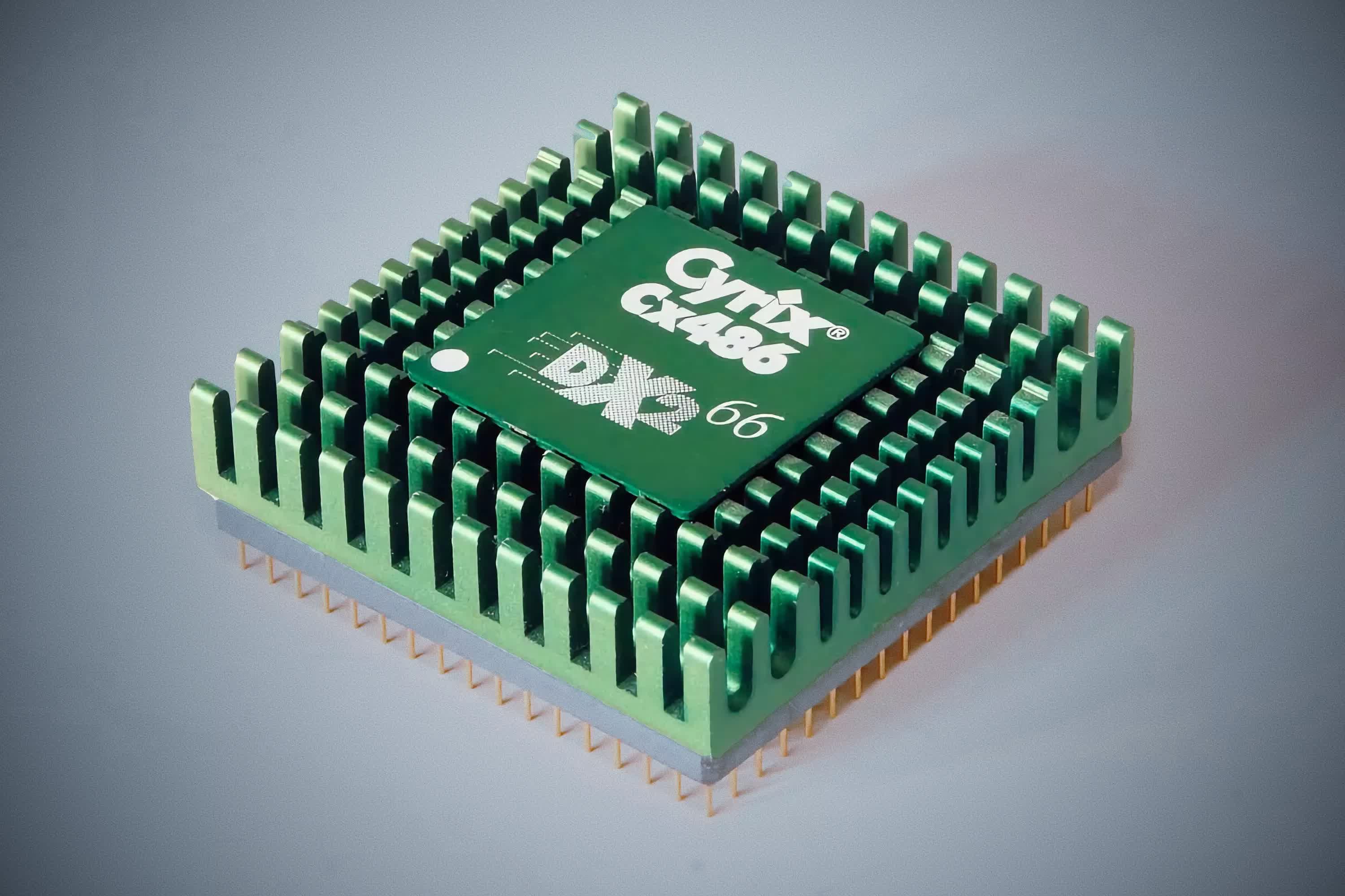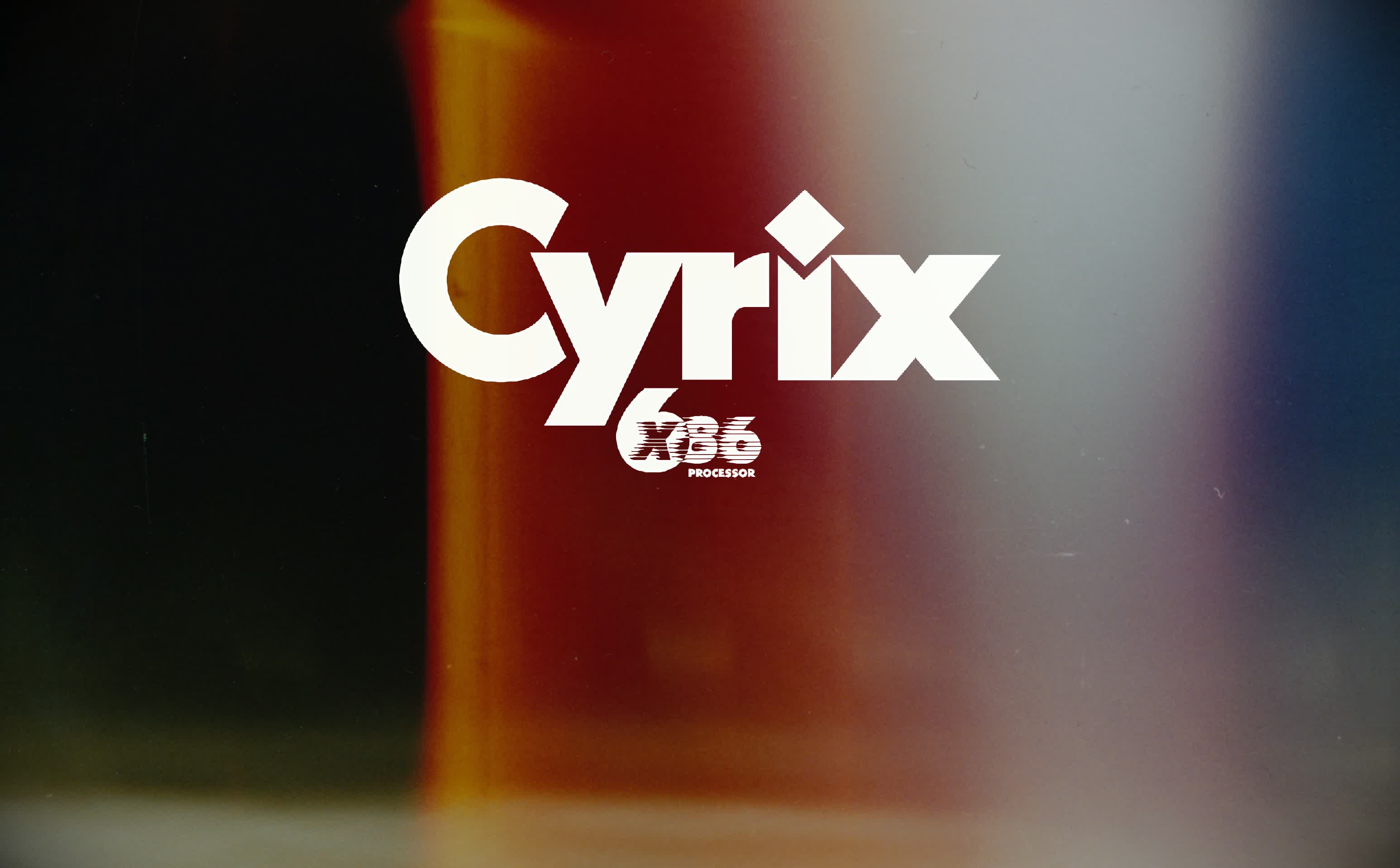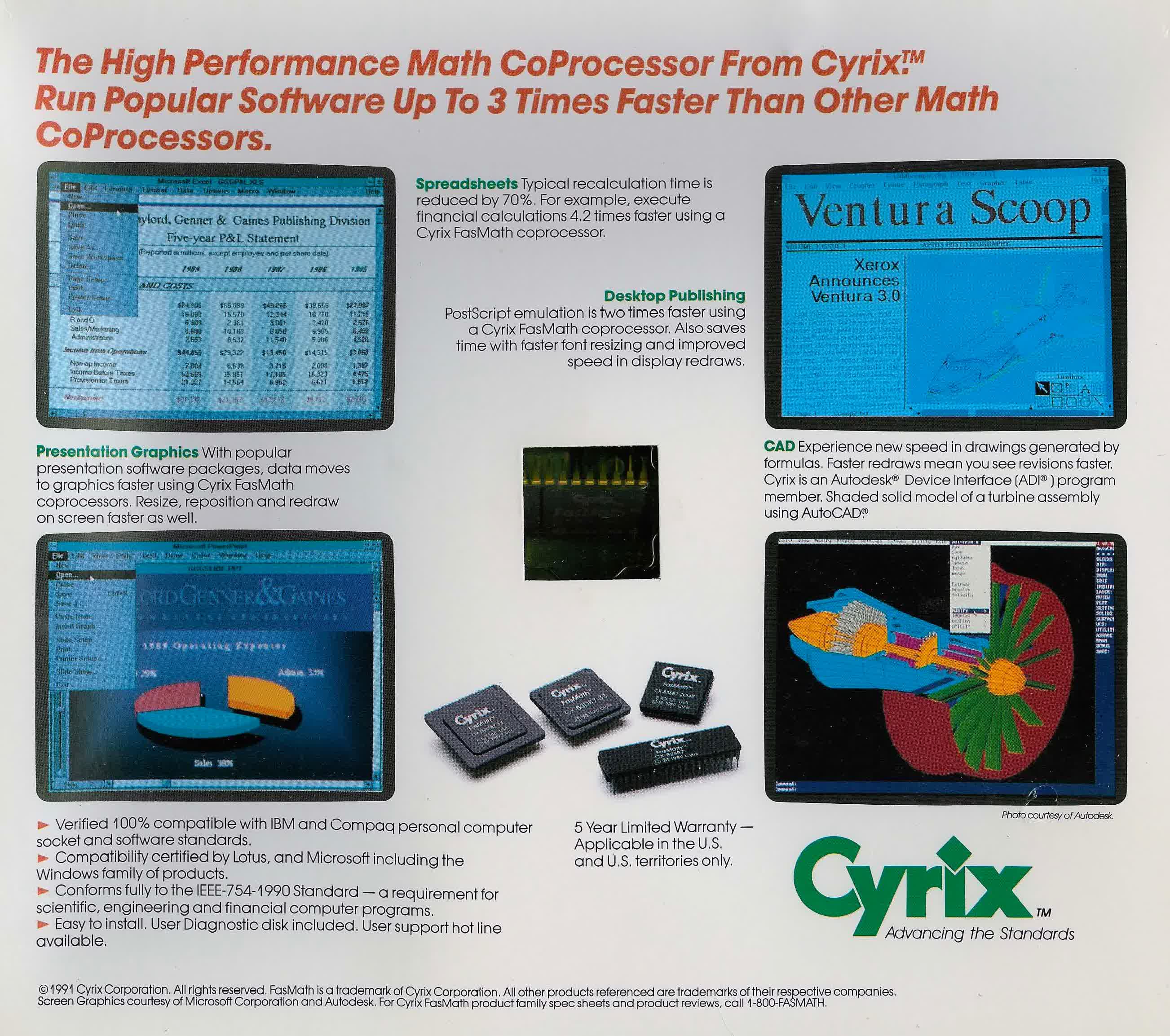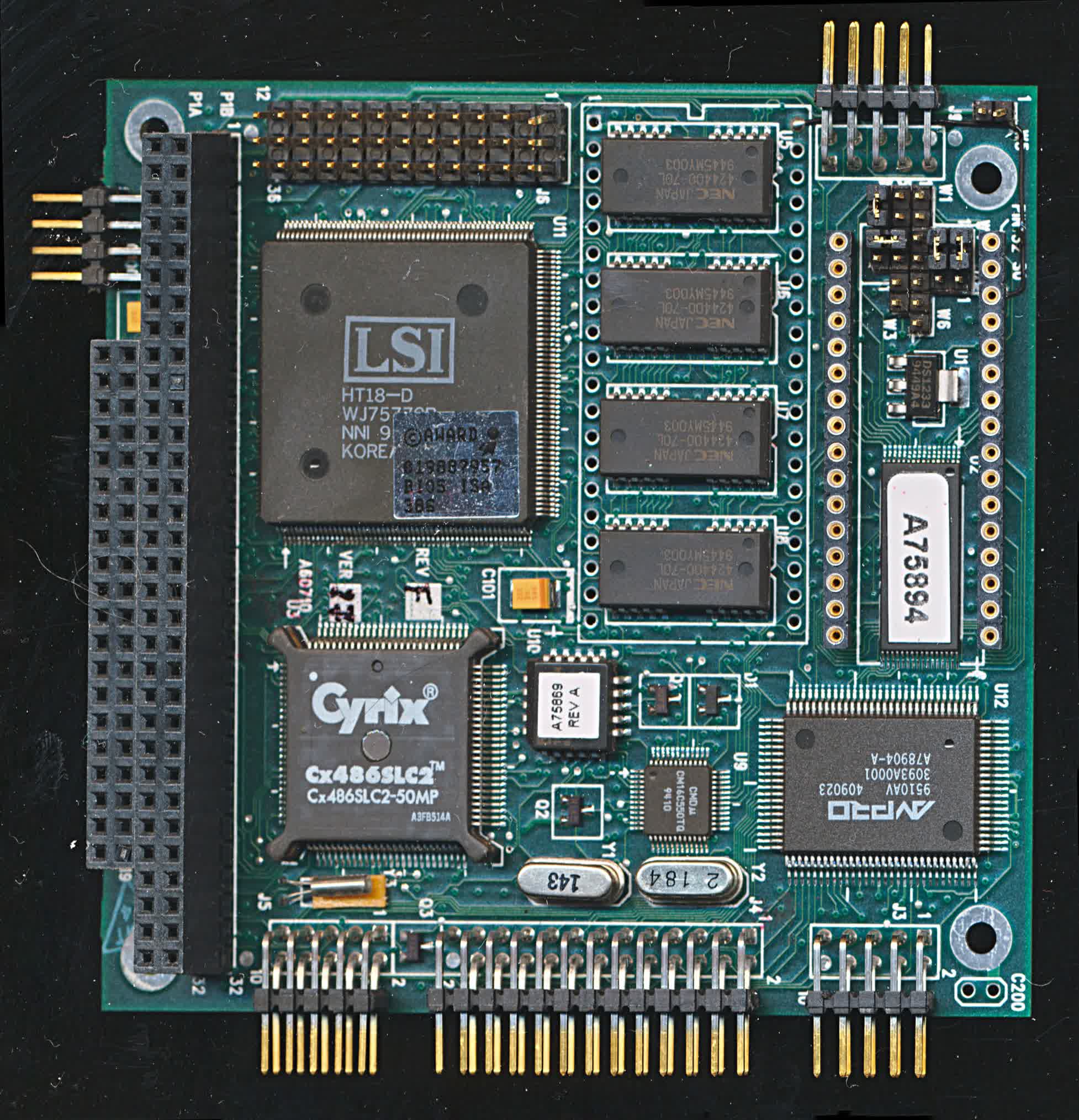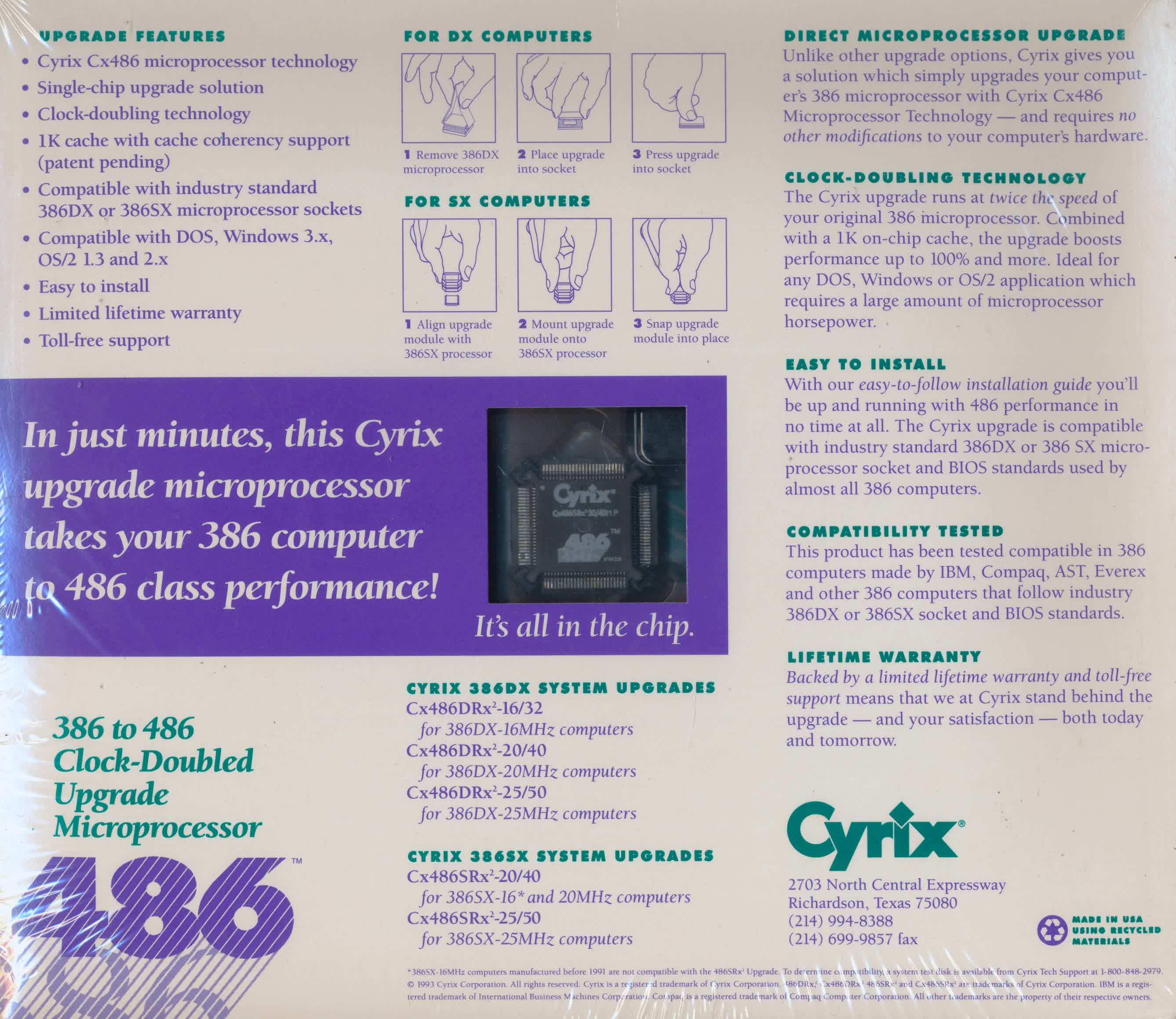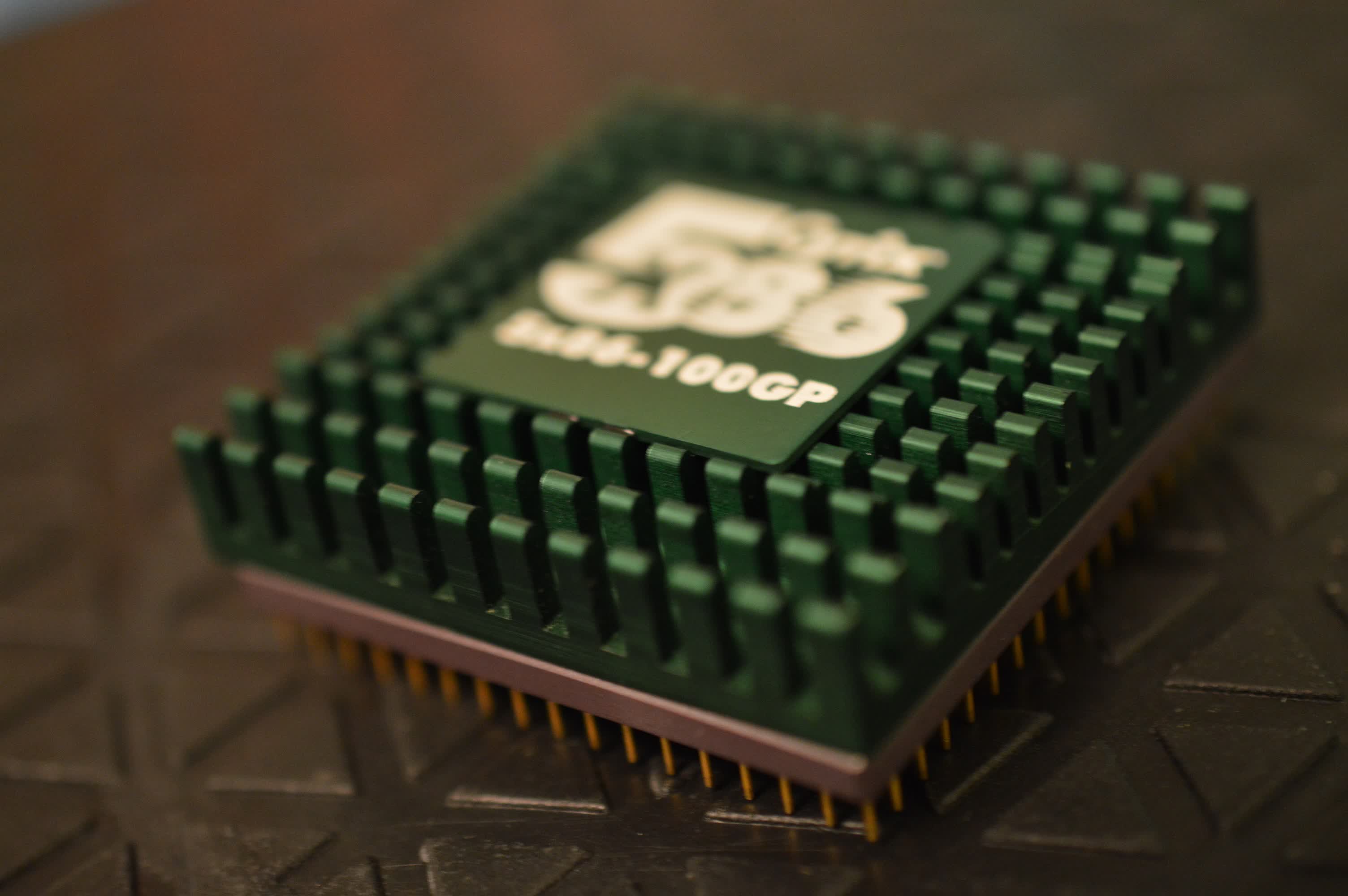Most of you are no doubt familiar with Intel, AMD, Qualcomm, IBM, Texas Instruments, and possibly even VIA – but there’s another precursor chipmaker you should know about: Cyrix.
For the better part of a decade, Cyrix brought the world of personal computing to millions in the form of attainable budget PCs. However, the company was ultimately killed by its best product, and that chip’s inability to run a popular game, followed by a disastrous merger with a larger partner.
The early 1990s was a marvelous but strange time for the desktop computing industry.
Intel seemed to be winning the fierce competition in the microprocessor space; Apple had switched to IBM’s PowerPC architecture, while Motorola’s 68K chips were slowly dragging Commodore’s Amiga PC to the grave. Arm was only a tiny flame sparked by Apple and a few others, almost entirely focused on developing a processor for the infamous Newton.
During this period, AMD was liberating its processors from the negative aura of being second-sourced from Intel. After cloning a few more generations of Intel CPUs, AMD developed its own architecture, which by the end of the nineties was well-regarded for its price and performance.
This was around the same time that AMD was liberating its processors from the negative aura of being second-sourced from Intel. After cloning a few more generations of Intel CPUs, AMD came up with its own architecture, which by the end of the nineties was well-regarded for its price and performance.
That success can be attributed at least in part to Cyrix, who had a window of opportunity to capture the home PC market and leave both Intel and AMD in the dust, but ultimately failed to execute and quickly disappeared into the tech graveyard.
Modest Beginnings
Cyrix was founded in 1988 by Jerry Rogers and Tom Brightman, starting as a manufacturer of high-speed x87 math co-processors for 286 and 386 CPUs. These were some of the greatest minds to leave Texas Instruments, and they had high ambitions to take on Intel and beat them at their own game.
Rogers embarked on an aggressive pursuit to find the best engineers in the US and became an infamously hard-driving leader for a team of 30 people tasked with the impossible.
The company’s first math coprocessors outperformed Intel equivalents by about 50% while also being less expensive. This made it possible to pair an AMD 386 CPU with a Cyrix FastMath co-processor and get 486-like performance at a lower price. This caught the industry’s attention and encouraged Rogers to take the next step and pursue the CPU market.
In 1992, Cyrix unveiled its first CPUs, the 486SLC and 486DLC, which were intended to compete with Intel’s 486SX and 486DX. They were also pin-compatible with the 386SX and 386DX, meaning they could be used as drop-in upgrades on aging 386 motherboards. Manufacturers also used them to sell budget laptops.
Both variants offered slightly worse performance than an Intel 486 CPU but significantly better performance than a 386 CPU.
The Cyrix 486 DLC couldn’t compete with Intel’s 486SX clock-for-clock, but it was a fully 32-bit chip with 1KB of L1 cache, and it cost significantly less.
At the time, enthusiasts loved that they could use a 486DLC running at 33 MHz to achieve comparable performance to an Intel 486SX running at 25 MHz. However, it wasn’t without problems, as it could lead to stability issues on older motherboards that didn’t have extra cache control lines or a CPU register control to enable or disable the on-board cache.
Cyrix also developed a “direct replacement” variant called the Cx486DRu2, and in 1994 released a “clock doubled” version called the Cx486DRx2, which had the cache coherency circuitry integrated into the CPU itself.
By then, however, Intel had released its first Pentium CPU, which drove 486DX2 prices down to the point where the Cyrix alternative lost its appeal. It became cheaper to upgrade to a 486 motherboard than to buy a Cyrix upgrade processor for an old 386 motherboard. When the “clock tripled” 486DX4 arrived in 1995, it was too little, too late.
Large PC manufacturers such as Acer and Compaq weren’t convinced by Cyrix’s 486 CPUs and instead opted for AMD’s 486 processors. This didn’t stop Intel from spending years in court alleging that the Cx486 violated its patents, though Intel never won a case.
Cyrix and Intel eventually settled outside of court, with Intel agreeing that Cyrix had the right to manufacture its own x86 designs in foundries that held an Intel cross-license, such as Texas Instruments, IBM, and SGS Thomson (later STMicroelectronics).
Never Repeat the Same Trick Twice… Unless You Are Cyrix
Intel launched the Pentium processor in 1993, based on a new P5 microarchitecture and finally coming up with a market-friendly name that many consumers could relate to and recommend. More importantly, it raised the bar in terms of performance, ushering in a new era of personal computing.
The novel superscalar architecture allowed it to complete two instructions per clock cycle. A 64-bit external data bus made it possible to read and write more data with each memory access. The faster floating-point unit was capable of up to 15 times the throughput of the 486 FPU, among other enhancements.
Intel launched the Pentium processor in 1993, based on a new P5 microarchitecture and finally coming up with a market-friendly name.
Cyrix took on the challenge to yet again create a middle ground for Socket 3 motherboards that were not able to handle the new Pentium CPU, even before that model was ready to ship. That middle ground was the Cyrix 5×86, which at 75 MHz offered many of the features of fifth-generation processors like the Pentium and AMD’s K5.
Cyrix even produced 100 MHz and 133 MHz versions, but they didn’t deliver all the advertised performance-enhancing features, as enabling these features caused instability. Overclocking potential was limited. These versions were short-lived, and within six months Cyrix decided to stop selling them and moved on to a different processor design.
Peak Cyrix Through the Lens of Quake
In 1996, Cyrix unveiled the 6×86 (M1) processor, which was expected to be yet another drop-in replacement for older Intel CPUs on Socket 5 and Socket 7 motherboards with decent performance. But this wasn’t just an upgrade path for budget systems, it was actually a little marvel in CPU design that was thought to do the impossible – it combined a RISC core with many of the design aspects of a CISC one.
The 6×86 also continued to use native x86 execution and ordinary
